Hartford, Connecticut Blood Testing Facilities
 Represents a LabCorp blood testing facility
Represents a LabCorp blood testing facility Represents a Quest Diagnostics blood testing facility
Represents a Quest Diagnostics blood testing facility
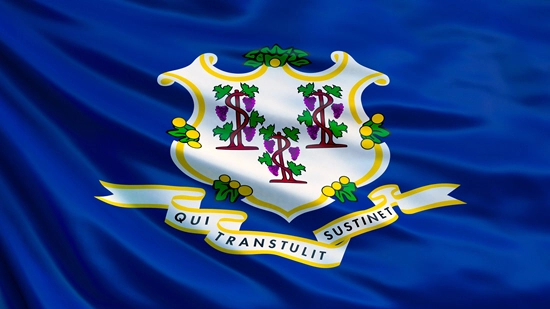
Nearby Labcorp Blood Testing facilities:
- Labcorp Center Distance: 5 m, 2284 Berlin Turnpike, Newington, Hartford County, CT, 6111
- Labcorp Center Distance: 24 m, 1068 W Main St, Waterbury, New Haven County, CT, 6708
- Labcorp Center Distance: 29 m, 3018 Dixwell Ave 3Rd Fl, Hamden, New Haven County, CT, 6518
- Labcorp Center Distance: 33 m, 12 Case St Ste 302, Norwich, New London County, CT, 6360
- Labcorp Center Distance: 36 m, 755 Campbell Ave Ste 3, West Haven, New Haven County, CT, 6516
- Labcorp Center Distance: 46 m, 67 Sand Pit Rd, Danbury, Fairfield County, CT, 6810
- Labcorp Center Distance: 47 m, 72 Cudworth Rd, Webster, Worcester County, MA, 1570
- Labcorp Center Distance: 50 m, 501 Kings Hwy E Ste 103, Fairfield, Fairfield County, CT, 6825
- Labcorp Center Distance: 56 m, 123 Summer Street St 385, Worcester, Worcester County, MA, 1608
- Labcorp Center Distance: 57 m, 21 Eastern Avenue Suite G2, Worcester, Worcester County, MA, 1605
- Labcorp Center Distance: 58 m, 140 W Boylston Dr, Worcester, Worcester County, MA, 1606
- Labcorp Center Distance: 61 m, 46 Route 25A Suite 2, Setauket, Suffolk County, NY, 11733
- Labcorp Center Distance: 64 m, 325 Middle Country Rd Ste C, Selden, Suffolk County, NY, 11784
- Labcorp Center Distance: 65 m, 2500 Nesconset Hwy Ste 30-31, Stony Brook, Suffolk County, NY, 11790
- Labcorp Center Distance: 66 m, 1290 Summer St Unit 5100, Stamford, Fairfield County, CT, 6902
- Labcorp Center Distance: 67 m, 222 State Route 299, Highland, Ulster County, NY, 12528
- Labcorp Center Distance: 68 m, 16 W Bridge St, Saugerties, Ulster County, NY, 12477
- Labcorp Center Distance: 69 m, 285 Sills Rd Bldg 11D, East Patchogue, Suffolk County, NY, 11772
- Labcorp Center Distance: 70 m, 1985 Crompond Rd Bldg B, Cortlandt Manor, Westchester County, NY, 10567
- Labcorp Center Distance: 71 m, 279 Main St Ste 200, New Paltz, Ulster County, NY, 12561
- Labcorp Center Distance: 73 m, 4830 Sunrise Hwy, Sayville, Suffolk County, NY, 11782
- Labcorp Center Distance: 74 m, 448 Temple Hill Rd, New Windsor, Orange County, NY, 12553
- Labcorp Center Distance: 75 m, 2500 Pondview Suite 102, Castleton On Hudson, Rensselaer County, NY, 12033
- Labcorp Center Distance: 76 m, 297 Knollwood Rd Ste 102, White Plains, Westchester County, NY, 10607
- Labcorp Center Distance: 78 m, 57 E Main St, Bay Shore, Suffolk County, NY, 11706
- Labcorp Center Distance: 79 m, 311 North Midland Ave, Nyack, Rockland County, NY, 10960
- Labcorp Center Distance: 80 m, 15 Third St 1St Fl, New City, Rockland County, NY, 10956
- Labcorp Center Distance: 81 m, 400 W Main St Ste 304, Babylon, Suffolk County, NY, 11702
- Labcorp Center Distance: 82 m, 175 Memorial Hwy, New Rochelle, Westchester County, NY, 10801
- Labcorp Center Distance: 83 m, 984 N Broadway Ste 301, Yonkers, Westchester County, NY, 10701
- Labcorp Center Distance: 84 m, 2001 5Th Avenue, Troy, Rensselaer County, NY, 12180
- Labcorp Center Distance: 85 m, 966 Park St Unit B7, Stoughton, Norfolk County, MA, 2072
- Labcorp Center Distance: 86 m, 222 Route 59 Suite 202, Suffern, Rockland County, NY, 10901
- Labcorp Center Distance: 87 m, 2001 Marcus Ave Ste N215, New Hyde Park, Nassau County, NY, 11042
- Labcorp Center Distance: 88 m, 2154 Newbridge Road Suite 2, Bellmore, Nassau County, NY, 11710
- Labcorp Center Distance: 89 m, 3 Coates Drive, Goshen, Orange County, NY, 10924
- Labcorp Center Distance: 90 m, 594 East Main Street, Middletown, Orange County, NY, 10940
- Labcorp Center Distance: 91 m, 136-20 38Th Ave 5L, Flushing, Queens County, NY, 11355
- Labcorp Center Distance: 93 m, 33-54 83Rd St Ste G-02, Jackson Heights, Queens County, NY, 11372
- Labcorp Center Distance: 94 m, 5 East 98Th Street, New York, New York County, NY, 10029
- Labcorp Center Distance: 95 m, 1336 Union St, Schenectady, Schenectady County, NY, 12308
- Labcorp Center Distance: 96 m, 680 Broadway Unit B3, Paterson, Passaic County, NJ, 7514
- Labcorp Center Distance: 97 m, 307 Hamburg Tpke Ste 103, Wayne, Passaic County, NJ, 7470
- Labcorp Center Distance: 99 m, 1031 Mcbride Ave Ste D-204, Woodland Park, Passaic County, NJ, 7424
Nearby Quest Blood Testing facilities:
- Quest Center Distance: 1 m, 100 Retreat Ave, Hartford, Hartford County, CT, 06106-2528
- Quest Center Distance: 4 m, 465 Silas Deane Highway, Wethersfield, Hartford County, CT, 06109-2134
- Quest Center Distance: 5 m, 131 New London Turnpike, Glastonbury, Hartford County, CT, 06033-2246
- Quest Center Distance: 8 m, 381 Hopmeadow Street, Simsbury, Hartford County, CT, 06089-9692
- Quest Center Distance: 10 m, 2 Concorde Way, Building 3A, Windsor Locks, Hartford County, CT, 06096-1577
- Quest Center Distance: 11 m, 520 Hartford Turnpike, Vernon, Tolland County, CT, 06066-0000
- Quest Center Distance: 13 m, 935 Farmington Avenue, Bristol, Hartford County, CT, 06010-3927
- Quest Center Distance: 14 m, 365 Queen Street, Southington, Hartford County, CT, 06489-0000
- Quest Center Distance: 15 m, 400 Saybrook Rd, Middletown, Middlesex County, CT, 06457-4731
- Quest Center Distance: 16 m, 816 Broad Street, Ste 22, Meriden, New Haven County, CT, 06450-4364
- Quest Center Distance: 20 m, 1933 E Main St, Torrington, Litchfield County, CT, 06790-3102
- Quest Center Distance: 23 m, 15 South Elm Street, Wallingford, New Haven County, CT, 06492-4741
- Quest Center Distance: 24 m, 135D Storrs Rd, Mansfield Center, Tolland County, CT, 06250-1638
- Quest Center Distance: 29 m, 3000 Dixwell Ave, Hamden, New Haven County, CT, 06518-3522
- Quest Center Distance: 33 m, 11 Woodland Road, Madison, New Haven County, CT, 06443-2342
- Quest Center Distance: 34 m, 55 Town Street, Norwich, New London County, CT, 06360-2332
- Quest Center Distance: 36 m, 15 Chesterfield Road, East Lyme, New London County, CT, 06333-1730
- Quest Center Distance: 40 m, 515 Bridgeport Ave, Shelton, Fairfield County, CT, 06484-5366
- Quest Center Distance: 41 m, 721 Bank Street, New London, New London County, CT, 06320-5005
- Quest Center Distance: 46 m, 7 Germantown Rd, Danbury, Fairfield County, CT, 06810-5000
- Quest Center Distance: 48 m, 555 Lordship Blvd Fl 1, Stratford, Fairfield County, CT, 06615-7156
- Quest Center Distance: 55 m, 42 Summer St, Pittsfield, Berkshire County, MA, 01201-4526
- Quest Center Distance: 56 m, 100 Mlk, Jr. Blvd, Worcester, Worcester County, MA, 01608-1220
- Quest Center Distance: 57 m, 6144 Route 25A, Wading River, Suffolk County, NY, 11792-2018
- Quest Center Distance: 58 m, 74 Commerce Dr, Riverhead, Suffolk County, NY, 11901-3105
- Quest Center Distance: 61 m, 1010 Route 112, Port Jefferson Station, Other, NY, 11776-2054
- Quest Center Distance: 62 m, 557 Post Rd, Darien, Fairfield County, CT, 06820-3609
- Quest Center Distance: 63 m, 23 Technology Dr, East Setauket, Suffolk County, NY, 11733-4069
- Quest Center Distance: 64 m, 235 Boyle Rd, Selden, Suffolk County, NY, 11784-1900
- Quest Center Distance: 65 m, 1 Randall Sq, Providence, Providence County, RI, 02904-2709
- Quest Center Distance: 66 m, 83 South Bedford Rd, Mt. Kisco, Westchester County, NY, 10549-3457
- Quest Center Distance: 67 m, 570 Expressway Dr South, Medford, Other, NY, 11763-2049
- Quest Center Distance: 68 m, 222 Middle Country Rd, Smithtown, Suffolk County, NY, 11787-2814
- Quest Center Distance: 69 m, 330 Route 212, Saugerties, Ulster County, NY, 12477-5122
- Quest Center Distance: 70 m, 1869A E Main St, Peekskill, Westchester County, NY, 10566-2505
- Quest Center Distance: 71 m, 79 Erdman Way, Leominster, Worcester County, MA, 01453-0000
- Quest Center Distance: 73 m, 61 Lincoln St, Framingham, Middlesex County, MA, 01702-8264
- Quest Center Distance: 75 m, 233 Montauk Hwy, West Sayville, Suffolk County, NY, 11796-1811
- Quest Center Distance: 76 m, 10 Commercial St, Foxboro, Norfolk County, MA, 02035-2509
- Quest Center Distance: 77 m, 280 Dobbs Ferry Rd, White Plains, Westchester County, NY, 10607-1900
- Quest Center Distance: 78 m, 1350 Deer Park Ave, North Babylon, Suffolk County, NY, 11703-1619
- Quest Center Distance: 79 m, 146A Manetto Hill Rd, Plainview, Nassau County, NY, 11803-1323
- Quest Center Distance: 80 m, 151 N Main St, New City, Rockland County, NY, 10956-3851
- Quest Center Distance: 81 m, 978 Route 45, Pomona, Rockland County, NY, 10970-3528
- Quest Center Distance: 82 m, 150 Lockwood Ave, New Rochelle, Westchester County, NY, 10801-4916
- Quest Center Distance: 83 m, 970 N Broadway, Yonkers, Westchester County, NY, 10701-1310
- Quest Center Distance: 84 m, 105 Stevens Ave, Mount Vernon, Westchester County, NY, 10550-2680
- Quest Center Distance: 86 m, 212 Station Plz N, Mineola, Nassau County, NY, 11501-3802
- Quest Center Distance: 87 m, 2001 Marcus Ave, Lake Success, Nassau County, NY, 11042-1011
- Quest Center Distance: 88 m, Indian Rock Shopping Center, Suffern, Rockland County, NY, 10901-4822
- Quest Center Distance: 89 m, 319 Longwood Ave, Boston, Suffolk County, MA, 02115-5728
Connecticut Hormone Replacement Therapy Services
The Conscious Evolution Clinic is an Insured and Licensed Medical Clinic which specializes in Hormone Restoration Treatments which optimize health and promote long-term wellness. We have a large and caring staff of experienced clinicians and board-certified physicians, dedicated to serving men and women over the age of thirty throughout the state of Connecticut.
We have streamlined the process required to provide you with the accurate diagnosis and effective treatment that you deserve. We have affiliate doctors all throughout the state of Connecticut that work on our behalf, providing the necessary physical and taking the blood sample that will provide us with all of the information needed to make a complete diagnosis of your hormone status.
HGH Injections for Connecticut Residents
One of the services that we are most proud to provide at the Conscious Evolution Institute is HGH Hormone Replacement Therapy. We feel that Age-Related HGH Deficiency is an under-treated phenomena which can severely impact the physical and psychological health of men and women across the country.
HGH is among the most important hormones produced by our body when it comes to maintaining streamlined and optimized function. Human Growth Hormone is like a throttle for our cellular metabolism, keeping our bodies running as efficiently as possible. HGH Levels start to decline as we enter middle age, however, and many men and women start to lose their vitality as a result of a progressive deficiency of the hormone.
Symptoms of Growth Hormone Deficiency include trouble sleeping, mood swings, changes in body mass, lack of energy, fatigue, poor cholesterol, and reduced cognitive capacity and memory. The Conscious Evolution Institute provides two effective forms of HGH Treatment: Human Growth Hormone Injection Therapy and Sermorelin HGH Alternative. Under most circumstances, both of these treatments are highly effective at restoring hormone balance and mitigating the effects of Growth Hormone Deficiency.
Testosterone Replacement Therapy in Connecticut
We also provide Hormone Restoration Services for men suffering from Testosterone Deficiency. Around middle age, men actually experience a phase of hormonal change that is not entirely unlike menopause. Many doctors actually refer to it as Andropause.
Although the symptoms of Andropause appear much more gradually than menopause, they still have a significant impact on male health: weight gain, frailty, loss of bone mineral density, loss of assertiveness, increased anxiety, and trouble sleeping are all common symptoms, and that's on top of the significant sexual symptoms that are commonly associated with the disorder.
The Conscious Evolution Institute offers comprehensive Testosterone Restoration Therapy for the treatment of Andropause, and you have a number of options when it comes to treatment, from Topical Testosterone to Testosterone Injections and Patches.
Connecticut HCG Therapy for Weight Loss
Not all forms of Hormone Therapy are intended specifically for Hormone Restoration, however. HCG Injections, for example, are actually a highly effective treatment for weight loss. Many men and women struggle significantly with their weight because they are unable to overcome the biggest pitfall of dieting: Hunger.
HCG Injections are incredibly effective because they actually have the ability significantly reduce the uncomfortable sensation of hunger, making it easier to stick with the diet. When HCG Therapy is combined with a Low-Calorie diet, it is possible to lose 5 pounds or more per week, without feeling drained of energy or overwhelmed with hunger.
Major Cities in Connecticut
Bridgeport
Bridgeport is the largest city in the state of Connecticut, and is located on the shores of the southwestern portion of the state. Bridgeport is located on both Long Island Sound and the Pequonnock River. Bridgeport was the city in which the first Subway Restaurant was opened, and P.T. Barnum of the Barnum and Bailey Circus was actually once the mayor of the city.
The largest employers in the city are the People's United Bank, Bridgeport Hospital, and St. Vincent's Medical Center. The city is also home to the University of Bridgeport.
New Haven
New Haven is the second most populous city in Connecticut, and is located slightly to the northeast of Bridgeport, situated on the shore of the eponymously named New Haven Harbor. New Haven is most famous for being the home of the prestigious Ivy League school Yale University, and also goes by the nickname, The Elm City.
Yale University provides the most jobs in the city, but education and healthcare in general are both strong sectors of the local economy. Retail, finance, and marketing also contribute significantly to the New Haven economy.
Stamford
Stamford, Connecticut is located on the southwestern tip of the state, and is the third most populous city in the state of Connecticut. Stamford is located very close to New York City, only around thirty miles from Manhattan. Stamford is considered one of the safest cities both in New England and in the United States as a whole.
Stamford is the most economically active area of Connecticut, with a number of the largest companies headquartered in the city, including Charter Communications, Pitney Bowes, and Crane Companies. A number of companies are based just outside the city limits, including Clairol, NBC, and Xerox.
Hartford
Hartford, Connecticut is the capital city of the state, as well as the fourth most populous city in the state. Because of the state laws in Connecticut, a large number of insurance companies have moved to Hartford to take advantage of the favorable laws, and the city is often referred to as the Insurance Capital of the World.
Hartford has one of the strongest economies in the United States, and is also home to some major national landmarks. Hartford is home to both the oldest park (Bushnell Park), and the oldest art museum (the Wadsworth Atheneum) offered and financed for public use.
Waterbury
Waterbury is located in the west-central region of Connecticut, and is the fifth most populous city in the state. Waterbury garnered the nickname, The Brass City, because it was the number one maker of brassware in the United States. It has also been historically recognized for the clocks and watches made in the region. The largest employers in Waterbury are St. Mary's Hospital, Waterbury Hospital, and the City of Waterbury. Waterbury is home to two museums, the Timexpo Museum and the Mattatuck Museum.
All About Hartford, Connecticut Geographic Area
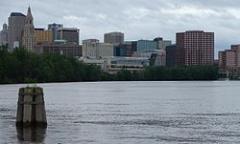

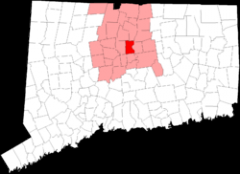
Hartford is the capital of the U.S. state of Connecticut and the historic seat of Hartford County until Connecticut disbanded county government in 1960. As of the 2010 Census, Hartford's population was 124,775, making it Connecticut's third-largest city after the coastal cities of Bridgeport and New Haven.
Nicknamed the "Insurance Capital of the World", Hartford houses many insurance company headquarters, and insurance remains the region's major industry. Almost 400 years old, Hartford is among the oldest cities in the United States. Following the American Civil War, Hartford was the wealthiest city in the United States for several decades. In 1868, Mark Twain wrote before he died, "Of all the beautiful towns it has been my fortune to see this is the chief."
In 2004, the Hartford metropolitan area ranked second nationally in per capita economic activity, behind only San Francisco. Hartford is ranked 32nd of 318 metropolitan areas in total economic production. Hartford is home to the nation's oldest public art museum, the Wadsworth Atheneum; the oldest public park, Bushnell Park; the oldest continuously published newspaper, The Hartford Courant; the second-oldest secondary school, Hartford Public, and the Mark Twain House, among other historically significant attractions.
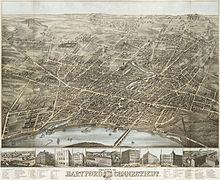
After Dutch explorer Adriaen Block visited the area in 1614, fur traders from the New Netherland colony set up trade at Fort Goede Hoop (Good Hope) at the confluence of the Connecticut and Park Rivers as early as 1623, but abandoned their post by 1654. Today, the neighborhood near the site is still known as Dutch Point. The first English settlers arrived in 1635 and their settlement was originally called Newtown, but was renamed Hartford in 1637. The name "Hartford" was chosen to honor the English town of Hertford, home of Samuel Stone, one of the settlers.
The leader of Hartford's original settlers from what is now Cambridge, Massachusetts, Pastor Thomas Hooker, delivered a sermon which inspired the writing of the Fundamental Orders of Connecticut, a document (ratified January 14, 1639) investing the people with the authority to govern, rather than ceding such authority to a higher power. Hooker's conception of self-rule embodied in the Fundamental Orders went on to inspire the Connecticut Constitution, and ultimately the U.S. Constitution. Today, one of the Connecticut's nicknames is the 'Constitution State'.
On December 15, 1814, delegations from throughout New England gathered at the Hartford Convention to discuss possible secession from the United States. Later in the century, Hartford was a center of abolitionist activity. Harriet Beecher Stowe, daughter of Lyman Beecher and author of Uncle Tom's Cabin, lived in Nook Farm, part of the Asylum Hill section of the city. In 1950, the Census Bureau reported Hartford's population as 7.1% black and 92.8% white. In 1987, Carrie Saxon Perry was elected mayor of Hartford, the first female African-American mayor of a major American city.
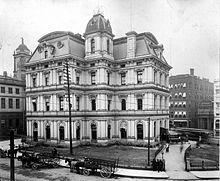
On the week of 12 April 1909 the Connecticut River reached a then-record flood stage of 24 ½ feet above the low water mark flooding the city and doing great damage.
On July 6, 1944, the Hartford Circus Fire destroyed the big top at the Ringling Bros. and Barnum & Bailey Circus, the deadliest circus fire in the history of the United States. Starting in the late 1950s the suburbs of Hartford grew while the capital city began a long decline. This decline may have been accelerated by construction of highways (including I-84 & I-91 which intersect in downtown Hartford). Many residents moved out of the city and into the suburbs, and this trend continues. During the 1980s, Hartford experienced an economic boom of sorts and by the late 1980s, almost a dozen new skyscrapers were proposed to be built in the city's downtown. For various reasons, including the economic recession that followed in the early 1990s, many of these buildings were never built. By the beginning of the twenty-first century, many workers in Hartford lived more than twenty-minutes drive from the city aethough according to the Census Bureau, the city's average commute time of 22 minutes is a full three minutes less than the US average.
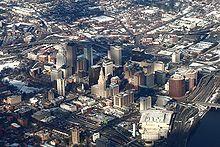
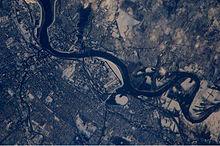
According to the United States Census Bureau, the city has a total area of 18.0 square miles (47 km2), of which 17.3 square miles (45 km2) is land and 0.7 square miles (1.8 km2) (3.67%) is water.
Hartford is bordered by the towns of West Hartford, Newington, Wethersfield, East Hartford, Bloomfield, South Windsor, and Windsor.
The Connecticut River forms the boundary between Hartford and East Hartford.
The Park River originally divided Hartford into northern and southern sections and was a major part of Bushnell Park, but the river was nearly completely enclosed and buried by flood control projects in the 1940s. The former course of the river can still be seen in some of the roadways that were built in the river's place, such as Jewell Street and the Conlin-Whitehead Highway.
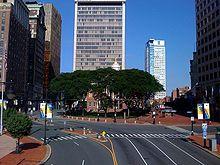
Hartford lies in the humid continental climate zone (Koppen Dfa). Summers are typically hot and muggy, while winters are cold with frequent snowfall. The average annual precipitation is approximately 46.3 inches (1,180 mm), which is distributed fairly evenly throughout the year. Hartford typically receives about 49 inches (124 cm) of snow in an average winter; the record seasonal snowfall was 115.2 inches (293 cm) during the winter of 1995 ae1996. The first snowfall typically occurs in mid to late November and the last snow of the season usually occurs in late March, although accumulating snow has occurred as early as mid-October and as late as mid-May in extreme events. During the summer, temperatures often exceed 90 °F (32 °C), and do so on an average of 17 days per year, though the record number of occurrences was 38 in 1983. Conversely, temperatures dip to 0 °F ( na18 °C) or below on an average of 4 nights per year. Thunderstorms are common during the summer months since the frontal boundary that separates the tropical air mass from colder air to the north moves back and forth over the city. While these thunderstorms may be severe with damaging winds and hail, tornadoes are rare. Tropical storms and hurricanes have also struck Hartford, although the occurrence of such systems is rare and is usually confined to the remnants of such storms. Hartford saw extensive damage from the 1938 New England Hurricane, as well as with Hurricane Irene in 2011. The highest temperature recorded in Hartford is 103 °F (39 °C) on July 22, 2011 and the lowest is na26 °F ( na32 °C) on January 22, 1961.
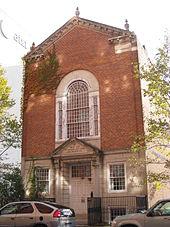
As of the census of 2010, there were 124,775 people, 44,986 households, and 27,171 families residing in the city. The population density was 7,025.5 people per square mile (2,711.8/km ²). There were 50,644 housing units at an average density of 2,926.5 per square mile (1,129.6/km ²). The racial makeup of the city was 18.72% white, 40.05% African American or black, 0.54% Native American, 1.62% Asian, 0.11% Pacific Islander, 28.51% from other races, and 5.44% from two or more races. 45.52% of the population were Hispanic or Latino, chiefly of Puerto Rican origin. Non-Hispanic Whites were 15.8% of the population in 2010, down from 63.9% in 1970.
There were 44,986 households out of which 34.4% had children under the age of 18 living with them, 25.2% were married couples living together, 29.6% had a female householder with no husband present, and 39.6% were non-families. 33.2% of all households were made up of individuals and 9.6% had someone living alone who was 65 years of age or older. The average household size was 2.58 and the average family size was 3.33.
In the city, the population distribution skews young: 30.1% under the age of 18, 12.6% from 18 to 24, 29.8% from 25 to 44, 18.0% from 45 to 64, and 9.5% who were 65 years of age or older. The median age was 30 years. For every 100 females, there were 91.4 males. For every 100 females age 18 and over, there were 86.0 males.
With 30 percent of the population living below the poverty line, Hartford's rate of poverty is second in the United States only to Brownsville, Texas.
The median income for a household in the city was $20,820, and the median income for a family was $22,051. Males had a median income of $28,444 versus $26,131 for females. The per capita income for the city was $13,428. After World War II, and continuing through the latter half of the 20th century, many Puerto Ricans moved to the city. As of 2010, 40.56% of Hartford residents claimed Puerto Rican heritage. This was the second-largest concentration of Puerto Ricans on the US mainland, behind only Holyoke, Massachusetts.
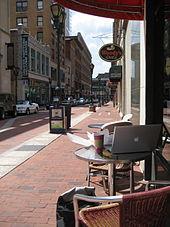
Hartford's neighborhoods are diverse and historic. The central business district, as well as the State Capitol, Old State House and a number of museums and shops are located Downtown. Parkville, home to Real Art Ways, is named for the confluence of the north and the south branches of the Park River. Frog Hollow, in close proximity to Downtown, is home to Pope Park and Trinity College which is one of the nation's oldest institutions of higher learning. Asylum Hill, a mixed residential and commercial area, houses the headquarters of several insurance companies as well as the historic homes of Mark Twain and Harriet Beecher Stowe. The West End, home to the Governor's residence, Elizabeth Park, and the University of Connecticut School of Law, abuts the Hartford Golf Club. Sheldon Charter Oak is renowned as the location of the Charter Oak and its successor monument as well as the former Colt headquarters including Samuel Colt's family estate ae Armsmear. The North East neighborhood is home to Keney Park and a number of the city's oldest and ornate homes. The South End features "Little Italy" and was the home of Hartford's sizeable Italian community. South Green hosts Hartford Hospital. The South Meadows is the site of Hartford-Brainard Airport and Hartford's industrial community. The North Meadows has retail strips, car dealerships, and Comcast Theatre. Blue Hills is home of the University of Hartford and also houses the largest per capita of residents claiming Jamaican-American heritage in the United States. Other neighborhoods in Hartford include Barry Square, Behind the Rocks, Clay Arsenal, South West, and Upper Albany- which is dotted by many Caribbean restaurants and specialty stores.
In 2010, Hartford ranked 19th in the United States' annual national crime rankings, (below the 200.00 rating.) It had the second highest crime rate in Connecticut, behind New Haven. Statistically Hartford's Northern districts (North East, Asylum Hill, Upper Albany) had the highest murder rate, while the South districts (Downtown, Sheldon, South Green) had a slightly lower murder rate, but had the most crime overall. Overall, the South Meadows neighborhood had the lowest crime rate, respectively.
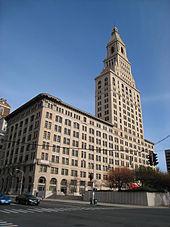
Hartford is the historic international center of the insurance industry, with companies such as Travelers, Aetna, The Hartford, The Phoenix Companies, Uniprise and Hartford Steam Boiler based in the city, and companies such as Lincoln National Corporation having major operations in the city. The area is also home to U.S. Fire Arms and United Technologies.
From the 19th century until the mid-20th century, Hartford was a major manufacturing city. During the Industrial Revolution into the mid-20th century, the Connecticut River Valley cities produced many major precision manufacturing innovations. Among these was Hartford's pioneer bicycle (and later) automobile maker Pope. As in nearly all former Northern manufacturing cities, many factories have been closed, relocated, or reduced operations.
Despite the city's lengthy history with the insurance industry, various insurers have recently left Hartford and moved their operations to other locations, including to some of Hartford's suburbs. Citing the tax structure in the city and parking shortages, MetLife recently vacated several floors in CityPlace, Connecticut's largest office building, and joined CIGNA in a large suburban campus in Bloomfield, Connecticut. Lincoln Financial has recently cut its Hartford workforce, while Travelers elected to construct a sprawling training complex in Windsor, Connecticut, just north of the city. Originating from the acquisition of the travel protection division of Travelers, Travel Insured International operates out of East Hartford, Connecticut. Additionally, the Fortune 100 MassMutual Company recently relocated its Hartford operations 16 miles north to Enfield, Connecticut. The Hartford's life insurance division is primarily located in nearby Simsbury, Connecticut.
At the same time, many companies have moved to or expanded in the central business district and surrounding neighborhoods. Aetna announced mid-decade that by 2010 it would move nearly 3,500 employees from its Middletown, Connecticut offices to its corporate headquarters in the Asylum Hill section of the city. Travelers recently expanded its operations at several downtown locations. In 2008, Sovereign Bank consolidated two bank branches as well as its regional headquarters in a nineteenth century palazzo on Asylum Street. In 2009, Northeast Utilities, a Fortune 500 company and New England's largest energy utility, announced it would establish its corporate headquarters downtown. In the same year, work began at the southeastern corner of Constitution Plaza on the AI Technology Center, the future headquarters of the eponymous engineering firm. AI's chief executive helped finance the building, the first commercially leasable structure in Connecticut to be certified at the platinum level under the US Green Building Council's LEED (Leadership in Energy and Environmental Design) program. Other recent entrants into the downtown market include GlobeOp Financial Services and specialty insurance broker S.H. Smith. CareCentrix, a patient home healthcare management company, is moving into downtown from East Hartford, where it will add over 200 jobs within the next few years.
Hartford is a center for medical care, research, and education. Within Hartford itself the city includes Hartford Hospital, The Institute of Living, Connecticut Children's Medical Center, and Saint Francis Hospital & Medical Center (which merged in 1990 with Mount Sinai Hospital).
Following the housing market decline, Hartford renters are finding cheap and declining rent averages in relation to national trends. auDeclining rents are affecting not only Hartford but also other markets in Connecticut and across the country as employers remain restrained about hiring. Connecticut's unemployment now stands at 9.1 percent, below the nation's 9.7 percent. au
According to a 2011 study from Brookings Institute Global Metro Monitor, Hartford has the highest GDP per capita of the cities listed, with $75,086.
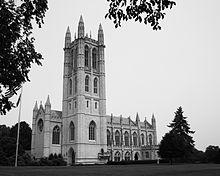
Hartford houses several world-class institutions such as Trinity College. Other notable institutions include Capital Community College (located Downtown in the old G. Fox Department Store building on Main Street), the University of Connecticut School of Business (also Downtown), the Hartford Seminary (in the West End), the University of Connecticut School of Law (also in the West End) and Rensselaer at Hartford (a Downtown branch campus of Rensselaer Polytechnic Institute). Saint Joseph College opened its school of pharmacy in the downtown area in 2011. The University of Hartford features several cultural institutions: the Joseloff Gallery, the Renee Samuels Center, and the Mort and Irma Handel Performing Arts center. The "U of H" campus is co-located in the city's Blue Hills neighborhood and in neighboring towns West Hartford and Bloomfield.
Hartford is served by the Hartford Public Schools . Hartford Public High School, the nation's second oldest high school, is located in the Asylum Hill neighborhood of Hartford. The city is also home to Bulkeley High School on Wethersfield Avenue, Global Communications Academy on Greenfield Avenue, Weaver High School on Granby Street, and Sport Medical and Sciences Academy on Huyshope Avenue. In addition, Hartford contains The Learning Corridor, which is home to the Montessori Magnet School, Hartford Magnet Middle School, Greater Harford Academy of Math and Science, and the Greater Hartford Academy of the Arts. One of the technical high schools in the Connecticut Technical High School System, A.I. Prince Technical High School, also calls the city home.The Classical Magnet School is one of the many Hartford Magnet Schools. Hartford is also home to Watkinson School, a private coeducational day school, and Grace S. Webb School, a special school.
The city of Hartford is protected 24/7, 365 by 395 professional firefighters of the city of Hartford Fire Department ae Class 1(HFD). The Hartford Fire Department operates out of 12 Fire Stations, strategically located throughout the city, under the command of 2 Deputy Chiefs in 2 Districts. The HFD maintains a fire apparatus fleet of 11 Engines, 5 Ladders, 1 Tac. Unit(Rescue), 1 Fireboat, 1 Rehab. Unit, 1 Decon. Unit, 1 Foam Unit, 1 Fire Investigation Unit, 3 Maintenance Units, and numerous other special, support, and a spare apparatus fleet consisting of 6 Spare Engines, 3 Spare Ladders, 1 Spare Tac., and 3 Spare District Chief's Units. The Hartford Fire Department is one of 3 ISO Class 1 fire departments in New England, which includes Milford, Connecticut and Cambridge, Massachusetts. The HFD responds to 22,619 emergency calls in 2010. The proposed 2010 ae2011 budget for the fire department is $32,462,602 which includes 399 sworn positions and 8 civilian posts. The current Chief of Department and Emergency Management Director is Edward Casares, Jr.
Below is a complete list of all Fire Station Locations and Apparatus in the city of Hartford according to District. There is also a fire apparatus maintenance and fire training facility located at 1 Fischer Rd.
The HPD was founded in 1860, though the history of law enforcement in Hartford begins in 1636. The current Hartford Police Chief is James Rovella. The department is located at 50 Jennings Road and includes divisions such as Animal Control, Bomb Squad, Detective Bureau, K-9 Unit, Marine Division, Negotiator, Records, S.W.A.T and Vice & Narcotics. To date seven officers have died in the line of duty. The proposed 2010 ae2011 budget for the police department is $76,110,089 which includes 424 sworn officers.
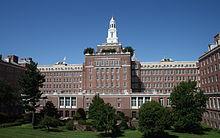
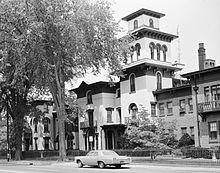
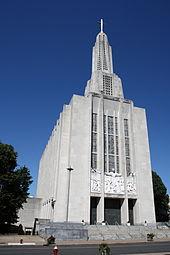
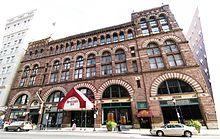
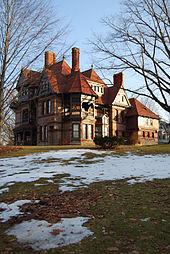
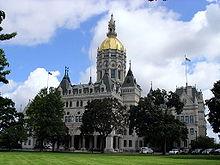
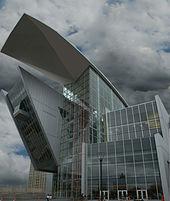
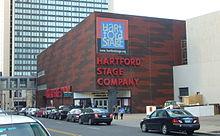
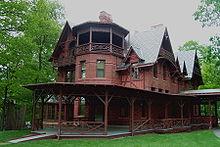

Hartford seen from Simsbury's Heublein Tower.

Hartford Skyline from Connecticut River

Main Street looking toward State House Square

Downtown, looking toward Old State House

Downtown, behind City Hall (foreground)

A. Everett Austin House in the historic West End

St. Francis Hospital & Medical Center

Connecticut Department of Environmental Protection in former Phoenix Mutual Life Insurance Company Building

Connecticut Historical Society Museum & Library

Beaux-Arts former Hartford Times Building

Center Church

Christ Church Cathedral Chapter House

Horace Wells Monument, Bushnell Park

Corning Fountain, Bushnell Park

Grounds of Connecticut State Capitol Building
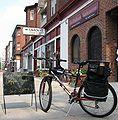
Hispanic and Jamaican Eateries near the Capitol

Ethiopian Restaurant in the West End

Old State House

Soldiers & Sailors Memorial Arch

Wadsworth Atheneum
Hartford became the home of the WHA's New England Whalers in 1975 after the club moved from Boston. The Whalers would be one of four teams from the WHA that joined the NHL in 1979. The city was home to the NHL's Hartford Whalers from 1979 to 1997, before the team relocated to Raleigh, North Carolina and became the Carolina Hurricanes.
The Boston Celtics played various home games per year in Hartford from 1975 ae1995.
The University of Connecticut men's and women's basketball team ae the UConn Huskies ae also play a number of their home games at the XL Center downtown. Other home games are played at Gampel Pavilion located on the university's campus in Storrs.
Hartford also used to have a National League baseball team, the Hartford Dark Blues, back in the 1870s, and a NFL team, the Hartford Blues, for one season in 1926.

Promoted as "New England's Rising Star", the City of Hartford has generated renewed interest with both local and national developers who are investing in the city and the Knowledge Corridor region.
In 2000, at The Big E in West Springfield, Massachusetts, Hartford and Springfield, Massachusetts ae the two major New England, Connecticut River Valley cities with centers only 24 miles apart ae jointly announced the Knowledge Corridor Partnership. The Knowledge Corridor Partnership aims to unite the two metropolitan areas economically, culturally, and geographically. The nickname comes from the metropolitan region's over 32 universities and liberal arts colleges, including several of the United States' most prestigious. Increasingly, Hartford and Springfield are considered twin cities. As of the 10th anniversary of the Knowledge Corridor, it was announced that the Knowledge Corridor is beginning to receive federal funds, as opposed to either state or city.
In 1997, Hartford lost its NHL franchise, the Hartford Whalers, but it has since gained an AHL franchise, the Connecticut Whale.
Some of the major new development projects include:
Adriaen's Landing: The state- and privately funded project is situated on the banks of the Connecticut River along Columbus Boulevard, and connects to Constitution Plaza. Constitution Plaza forced hundreds of households to relocate when it was built a few decades ago. The latest project includes the 540,000-square-foot (50,000 m2) Connecticut Convention Center, which opened in June 2005 and is the largest meeting space between New York City and Boston. Attached to the Convention Center is the 22-story, 409 room Marriott Hartford Hotel-Downtown which opened in August 2005. Being constructed next to the convention center and hotel is the 140,000-square-foot (13,000 m2) Connecticut Science Center. The final component of the project, 'Front Street', sits across from the Convention Center and covers the land between Columbus Boulevard and the Hartford Times Building. The Front Street development combines retail, entertainment and residential components. Publicly funded parts of the project will include transportation improvements. There have been significant delays in the Front Street project ae the first developer was removed from the project because of lack of progress. The city has chosen a new developer, but work is yet to begin on the retail and residential component of Front Street. The city and state may soon take action to increase the speed with which the project enters implementation phases. There has been talk of bringing an ESPN Zone to the Front Street (ESPN is headquartered in nearby Bristol). On the back side of Front Street, the historic Beaux-Arts Hartford Times Building is being converted for administrative offices for the Wadsworth Atheneum. In 2004, Underground Coalition, a Connecticut hip hop promotion company, produced The First Annual Hartford Hip Hop festival, which also took place at Adriaen's Landing. The event drew over 5,000 fans. A significant number of cultural events and performances take place every year at Mortensen Plaza (Riverfront Recapture Organization) by the banks of the CT River. These events are held outdoors and include live music, festivals, dance, arts and crafts and they are very diverse in ethnicity. Hartford also has a vibrant theater scene with major Broadway productions at the Bushnell Theater as well as performances at the Hartford Stage and Theaterworks (City Arts).
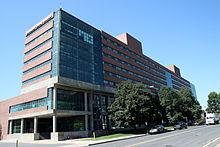
The New Haven ae Hartford ae Springfield commuter rail line (officially named The Knowledge Corridor Intercity Rail Line) is expected to be operational during 2015. According to Connecticut Governor Malloy, the Knowledge Corridor line will reach speeds up to 110 mph (177 km/h). The rail line is intended to unite the densely populated, 61 mile region between Hartford, Springfield, and New Haven; ease the frequently congested Interstate 91 automobile highway; and increase mobility in a region that is now almost entirely dependent upon automobile ownership. As of May 2011, Connecticut's portion of the commuter line has been 3/4 funded. Currently, the state is seeking the $227 million necessary to complete the northern portion of the line from the $2.4 billion in Federal funds that Florida rejected to fund its own high-speed rail project.
Hartford 21: Recently completed on the site of the former Hartford Civic Center Mall (now known as the XL Center), the project includes a 36 story residential tower aethe tallest residential tower between New York City and Boston. Attached to the tower is 90,000 square feet (8,000 m2) of office space and 45,000 square feet (4,200 m2) of retail space, all contained within a connected complex. The Greater Hartford YMCA has opened in the complex and will soon be closing its Jewell Street site which will be knocked down for another project. The XL Center Arena remains open and hosts the AHL Connecticut Whale and the UConn men's and women's basketball teams, as well as shows and concerts.
Capital Community College at the 11-story G. Fox Department Store Building: The 913,000-square-foot (84,800 m2) former home of the G. Fox & Company Department Store on Main Street has been renovated and made the new home of Capital Community College as well as offices for the State of Connecticut and ground level retail space. Capital Community College helps train (mostly) adult students in specific career fields. On Thursdays, vendors sell crafts on the Main Street level. Two music clubs, Mezzanine and Room 960, are housed in the building.
Connecticut Culinary Institute: The school recently relocated its main campus to the former Hastings Hotel and Conference Center, which is next to Aetna headquarters in the city's Asylum Hill neighborhood just west of downtown. The school also has a branch campus in Suffield, Connecticut. The Hastings Hotel and Conference Center, which closed abruptly in 2004, was the hotel where former President Bill Clinton stayed when he was in the city.
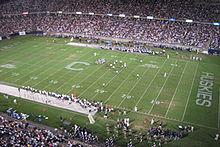
Rentschler Field: In neighboring East Hartford, the stadium for UConn football was part of the revitalization plan for Hartford and was built on some of the lands donated by United Technologies. The bulk of the land donated will be used for technology, entertainment, lodging and retail development. A high-tech research park is also currently being planned for the site.
Transportation and parking changes: The New Britain-Hartford Busway is in the works. Local activists are pushing for more bike lanes, as well as for these lanes to be respected by motorists and kept clear of debris. The local bicycle advocacy organization formed in 2005, Central Connecticut Bicycle Alliance, has been making surprising inroads in Hartford and the surrounding suburbs.
Some roads were turned into pedestrian walkways to reduce gridlock, while other roads were widened or made one-way. Some intersections were also improved to better handle traffic. A large parking garage was built downtown to ease parking problems. A series of shuttle routes was created, known as the "Star Shuttle" and now run by the Greater Hartford Transit District.
New condos and apartments:
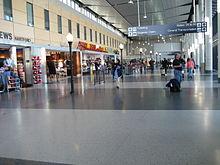
Bradley International Airport, in Windsor Locks, Connecticut, is twenty minutes north of downtown Hartford. It features over 100 daily departures to 30 destinations on nine airlines. Other airports serving the Hartford area include:
Hartford city buses run at regular intervals throughout the city. Interstate bus is provided by Peter Pan Bus, Greyhound Bus and to a lesser degree, Bonanza Buses. Chinatown bus lines provides low-cost bus service between Hartford and their New York and Boston hubs. Additionally, there are buses for connections to smaller cities in the state. The bus station is located on the ground floor of the transport center at One Union Place in Downtown Hartford. A free people circulator, known as the "Star Shuttle," operates around downtown.
A proposed bus rapid transit line between Hartford and New Britain, the New Britain aeHartford Busway, is being considered as a way to reduce traffic congestion on I-84.

I-84, which runs from Scranton, to its intersection with I-90 in Sturbridge, just over the Massachusetts border, and
I-91, which runs from New Haven along the Connecticut River ultimately to Canada, intersect in downtown Hartford. In addition to I-84 and I-91, two other highways service the city: Route 2, an expressway that runs from downtown Hartford to Westerly, passing through Norwich and past Foxwoods Resort Casino; and the Wilbur Cross Highway portion of Route 15 that skirts the southeastern part of the city near Brainard Airport. A short connector known as the Conlin aeWhitehead Highway also provides direct access from I-91 to the Capitol Area of downtown Hartford.
Hartford experiences heavy traffic as a result of its substantial suburban population (nearly 10 times that of the actual city). As a result, thousands of people travel on area highways at the start and end of each workday. I-84 experiences traffic from Farmington through Hartford and into East Hartford and Manchester during the rush hour.
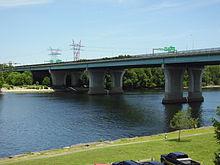
Several major surface arteries also run through the city. Albany Avenue Route 44 runs westward through the northern part of West Hartford to the hills of northern Litchfield County and into New York, and eastward towards Putnam and into Rhode Island. Main Street (Route 159) heads north through Windsor towards the western suburbs of Springfield, Massachusetts. Wethersfield Avenue (Route 99) heads south through Wethersfield towards Middletown. Farmington Avenue heads west through West Hartford Center and Farmington towards Torrington.
A bicycle route runs through the center of Hartford. This route is a small piece of the large eastern bicycle route ae the East Coast Greenway (ECG). The 3,000-mile (4,800 km) ECG runs from Calais, Maine to the Florida Keys. The route is intended to be off road, but some sections are currently on-road. The section through Hartford is right through the middle of Bushnell Park.
There are designated bicycle lanes on several roads including Capitol Avenue, Zion Street, Scarborough Lane, Whitney, and South Whitney.
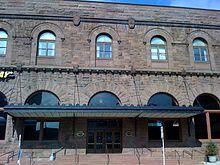
The dependence on railroads has decreased since the construction of Interstate 91 and Interstate 84 through the city center. However, Hartford's Union Station at One Union Place still operates a significant schedule. Amtrak provides service from Hartford to Vermont via Springfield, and southward to New Haven, with connections to New York, Boston, Providence, and Washington DC. The station also serves numerous bus companies because of Hartford's mid-way location on the New York to Boston route.
Currently, there are preliminary plans to create a New Haven-Hartford-Springfield Commuter Rail Line with stations in communities close to I-91. It would use rail currently used by Amtrak, which in turn was formerly part of the New York, New Haven and Hartford Railroad system.
Connecticut Transit is owned by the Connecticut Department of Transportation. CTTRANSIT operates local and commuter bus service within the city and the surrounding area. Taxi service is available from the train station at 1 Union Place or by calling one to any location in the area. There is a free downtown shuttle, and city buses are equipped with bike racks.
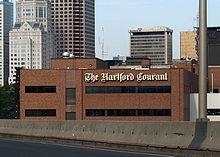
The daily Hartford Courant newspaper is the country's oldest continuously published newspaper, founded in 1764. A weekly newspaper, owned by the same company that owns the Courant, the Hartford Advocate, also serves Hartford and the surrounding area, as does the Hartford Business Journal ("Greater Hartford's Business Weekly") and the weekly Hartford News.
The Hartford region is also served by several magazines. Among the local publications are: Hartford Magazine, a monthly lifestyle magazine serving Greater Hartford; CT Cottages & Gardens; Connecticut Business, a glossy monthly serving all of Connecticut; and Home Living CT, a home and garden magazine published five times a year and distributed statewide.
Several television and radio stations based in Hartford, including Connecticut Public Television which is headquartered in Hartford. These stations serve the Hartford/New Haven market, which is the 29th largest media market in the U.S.
See also: List of newspapers in Connecticut in the 18th-century: Hartford
Hartford has been home to many historically significant people such as dictionary author Noah Webster (1758 ae1843); inventor Sam Colt (1814 ae62); and American financier and industrialist J.P. Morgan (1837 ae1913).
Some of America's most famous authors lived in Hartford, including Mark Twain (1835 ae1910), who moved to the city in 1874; his next-door neighbor at Nook Farm, Harriet Beecher Stowe (1811 ae96); and poet Wallace Stevens (1879 ae1955), an insurance executive in the city. More recently Dominick Dunne (1925 ae2009) and John Gregory Dunne (1932 ae2003) resided in Hartford.
Many broadcasters have called Hartford home over the years. Howard Stern worked mornings at WCCC-FM in 1979, meeting local resident and sidekick Fred Norris there. Both Bill O'Reilly and Gayle King worked at WFSB. Twisted Sister lead vocalist Dee Snider also did a morning show on WMRQ radio in the mid 2000s. MSNBC "Morning Joe" co-host Mika Brzezinski was a reporter for years on WTIC ch 61 and WFSB. Former NFLer Beasley Reece was Sports Director for WVIT in the late 80's and early 90's, also a one-time home to ESPN's Chris Berman.
Actors and others in the entertainment business from Hartford include Academy Award aewinning film icon Katharine Hepburn, actors Linda Evans, William Gillette, Charles Nelson Reilly, TV producer and writer Norman Lear.
In the field of music residents include singer Sophie Tucker, (1884 ae1966), "last of the red-hot mamas." Rock and Roll Hall of Fame Members Gene Pitney, Mike Carabello (of Santana); Mark McGrath; bass guitarist Doug Wimbish of Living Colour; Cindy Blackman (drummer for Lenny Kravitz); jazz alto saxophonist Jackie McLean; concert violinist Elmar Oliveira (b.1950); was born in the city; and brothers Jeff Porcaro, Mike Porcaro and Steve Porcaro (of the group Toto). Composer Multi Instrumentalist Dawn LaRue on AOL Music (b.1962) in Hartford.
Former Cleveland Browns head coach Eric Mangini is from Hartford. Former NHL player Craig Janney was born in Hartford. Basketball stars include NBA players Marcus Camby, Rick Mahorn, Johnny Egan, and Michael Adams, as well as NFL kicker John Carney, and former NFLer Eugene Robinson.
Hartford features numerous sister cities. They include:
Word Count: 6318





